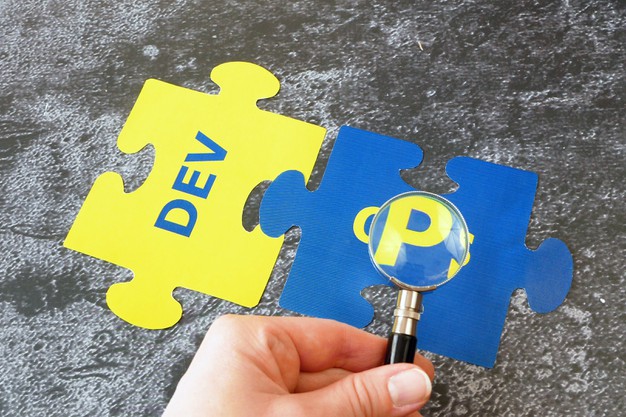DevOps keeps marching forward. Tools evolve. Culture matures. Delivery pipelines stretch across cloud edges, AI platforms, and security-first workflows.
Once seen as a bold experiment, DevOps now stands as the business engine behind rapid product delivery, automated resilience, and engineering excellence.
Yet the story does not stop at automation or CI/CD. By 2026, new expectations, fresh architectures, smarter intelligence layers, and deeper security requirements reshape how engineering teams build, deploy, and operate software at scale.
Here in this article, we will discuss the emerging DevOps trends to watch in 2026. So, without any ado, let us get started.
Emerging DevOps Trends To Watch
1. AI-Native DevOps and Autonomous Pipelines
Automation once meant scripts. Then pipelines. Now the rise of AI-native DevOps gradually shifts operations into self-optimizing systems. Models observe code changes, forecast deployment risks, auto-tune performance, spot anomalies before they snowball, and propose pipeline improvements.
In 2026, expect AI copilots embedded into CI/CD workflows. Systems will:
- Analyze code for security and style flaws at commit level
- Recommend rollback triggers based on predicted behavior
- Adjust compute allocation during traffic spikes
- Suggest test cases derived from historical defect patterns
- Spot configuration drifts before incidents surface
Pipelines act less like conveyor belts and more like intelligent assistants. Engineers shift from reactive firefighting to strategic oversight. Machine logic keeps eyes open, even during midnight hours when teams rest.
2. Platform Engineering and Internal Developer Platforms (IDPs)
Developer experience rises to top priority. Instead of scattered scripts, thousands of YAML lines, and isolated tooling choices, organizations continue building internal developer platforms.
These platforms package infrastructure, observability, deployment logic, and security controls into unified self-service portals. Developers request environments in clicks, not days.
IDPs in 2026 bring:
- Golden path workflows to reduce cognitive stress
- Modular infrastructure blueprints
- One-stop dashboards for logs, metrics, and tracing
- Role-based access and compliance baked in
- Automated policy enforcement
Platform engineering transforms DevOps from a tool-stack struggle into an orderly runway for delivery. Engineering organizations scale faster. Burnout drops. Cycle time shrinks. Focus returns to innovation instead of pipeline patchwork.
3. FinOps-Driven Delivery Pipelines
Cloud sprawl no longer hides in shadows. Budgets feel pressure. Teams adopt FinOps deeply inside DevOps pipelines. Cost modeling joins design reviews. Deployment processes observe spend patterns. Dynamic scaling models adjust based on usage and forecasts, not guesswork.
2026 DevOps programs track:
- Real-time cost impact of deployments
- Cross-team spend breakdowns
- Environment-level consumption policies
- Idle resource sweeps and automated decommissioning
Operational visibility pairs with financial discipline. Cloud shows power when used wisely. Businesses demand value acceleration without runaway bills. FinOps sits as a guardrail and a growth enabler.
4. Edge DevOps and Distributed Deployments

Workloads no longer stay confined to core data centers or central cloud regions. Industrial sensors, drone fleets, autonomous systems, retail IoT, logistics hubs, and field robotics all stream live data. Applications run at the edge for instant response and offline resilience. DevOps adapts accordingly.
Emerging tooling in 2026 brings:
- Lightweight CI/CD at edge clusters
- Secure over-the-air software updates
- Minimal-footprint observability stacks
- Automated rollback for field devices
- Hybrid edge-cloud workload routing
Latency falls. Reliability improves in harsh environments. Edge DevOps blends centralized intelligence with decentralized execution.
5. Security-As-Code and Continuous Compliance
DevSecOps grows sharper. Security as a last-mile checklist fades. Security-as-Code rises instead. Policies live inside repositories. Secrets rotate automatically. Least-privilege rules enforce themselves.
2026 environments enforce:
- Signed artifacts across pipeline stages
- Zero-trust deployment channels
- Automated compliance scans inside build steps
- Threat intelligence feeding runtime defenses
- Continuous verification of identity, access, and network posture
Software delivery becomes security-first without slowing innovation. Regulatory environments tighten; automation answers the challenge.
6. Ubiquitous Observability and Adaptive Telemetry
Monitoring once meant dashboards and occasional alerts. Now observability stands as a strategic pillar. Distributed systems, microservices, and cloud functions demand real-time signals. 2026 brings adaptive telemetry—systems that scale logging based on context, risk, and performance patterns.
Expect:
- Auto-tuned tracing based on anomaly suspicion
- Pipeline logs married to production metrics
- Unified views from code commit to runtime load
- Predictive alerting without noise fatigue
- Observability applied to supply chain and dependencies
Systems gain a sixth sense. Outages lose surprise power. Engineering teams respond faster with sharper insight.
7. Low-Code and DevOps Convergence
Low-code platforms enter enterprise workflows with firm footing. Business logic and automation tasks flow through visual builders. DevOps processes begin supporting low-code delivery, blending rapid prototyping with enterprise governance.
By 2026:
- Low-code artifacts enter CI/CD pipelines
- Security policies evaluate visual workflows
- Citizen developers operate under safe guardrails
- Reusable automation blocks accelerate delivery cycles
Low-code no longer exists in a silo. It joins DevOps as a tactical tool for accelerating organizational speed without sacrificing control.
8. Infrastructure-as-Everything
Infrastructure as Code paved the road. Now the evolution expands: infrastructure-as-everything. Networks, identity, compliance, secrets, access control, and monitoring templates live in versioned repositories. Environments become reproducible across cloud, hybrid, and on-prem.
Trends shaping this era:
- GitOps expands beyond Kubernetes into enterprise infrastructure
- Policy as Code governs resource creation
- Immutable everything — servers, containers, IaC modules
- Automated dependency graphing to prevent environment drift
Repeatability replaces improvisation. Deployment becomes science, not art.
9. Serverless DevOps and Function Automation
Serverless continues rising. Functions scale instantly. No server maintenance. Cost matches traffic, not uptime. DevOps adapts by managing triggers, event pipelines, observability, and service mesh behavior.
2026 focus areas include:
- Event-driven architecture governance
- Fine-grained performance tuning
- Automated idle cleanups
- Function cost monitors
- Security scanning for ephemeral workloads
Enterprises lean on serverless to reduce infrastructure burden while accelerating product iteration.
10. Supply Chain Security and Artifact Provenance
Software composition grows complex. Packages, dependencies, build images, AI models, and containers come from external sources. Supply chain trust becomes priority. Tampering risks rise. The industry doubles down on origin tracking, build verification, and content signing.
New standards emerge:
- SBOM generation baked into pipelines
- Mandatory artifact signing
- Dependency freshness checks
- Attack simulation for build environments
- Policy gates around third-party modules
Trust shifts from assumption to verification. Businesses protect both brand reputation and customer data.
11. Resilience Engineering and Chaos Automation

Complex systems break in unexpected ways. Chaos testing moves from niche to mainstream. Instead of fear, teams adopt controlled failure scenarios to strengthen resilience. Fault injection platforms simulate network drops, latency surges, cloud region outages, and dependency faults.
2026 resilience engineering brings:
- Automated stress tests in staging
- Production-safe chaos routines
- Real-time learning from system shocks
- Failure observability tied to recovery metrics
Systems evolve like trained athletes – stronger after disciplined pressure.
12. Sustainable IT and Green DevOps
Sustainability influences technology strategy. Energy tracking enters CI/CD and infrastructure dashboards. Build pipelines optimize resource consumption. Idle clusters power down. Deployment choices factor environmental footprint.
Emerging focus includes:
- Carbon-aware workload scheduling
- Efficient container usage
- Renewable-powered datacenter preference
- Thermal efficiency dashboards
- Digital waste reduction practices
Sustainable DevOps balances innovation with responsibility, proving technology growth can align with environmental care.
13. Human Collaboration and Culture 3.0
Tools change fast, but culture remains core. DevOps 2026 prioritizes psychological safety, knowledge sharing, and balanced work. Automation supports, not replaces talent. Cross-functional alignment strengthens enterprise capability.
Modern collaboration practices involve:
- Shared runbooks and playbooks as living artifacts
- AI-assisted knowledge indexing
- Blameless retrospectives focused on system learning
- Rotational support duties to avoid burnout
- Continuous learning frameworks for engineers
Human clarity fuels technical excellence. When culture thrives, delivery pipelines follow.
14. Edge-AI DevOps for Autonomous Systems
Robotics, smart vehicles, industrial automation, and autonomous drones rely on edge AI. DevOps adapts to handle ML model deployment, real-time inference tuning, and offline operation resilience. Model rollouts join code pipelines.
Focus areas:
- Model version control
- Drift detection
- Hybrid inference and retraining loops
- Secure device updates
- Hardware-aware optimization
Intelligence moves closer to devices, making speed and autonomy operational standards.
Conclusion
DevOps in 2026 stands far beyond automation scripts or release pipelines. It evolves into a strategic capability woven across enterprise functions. AI enhances delivery.
Platforms unify workflows. Security embeds inside every commit. Edge systems expand reach. Observability sharpens. Sustainability enters tech decisions. Engineering culture lifts talent.
What emerges is not a buzzword movement, but a mature operational discipline driving innovation, reliability, and financial strength. Organizations adopting these emerging DevOps trends build stronger delivery confidence, faster development pathways, resilient systems, and long-term technical credibility.
The horizon remains bold. DevOps adapts, refines, and grows—forming the backbone of modern digital execution.
Also Read:
